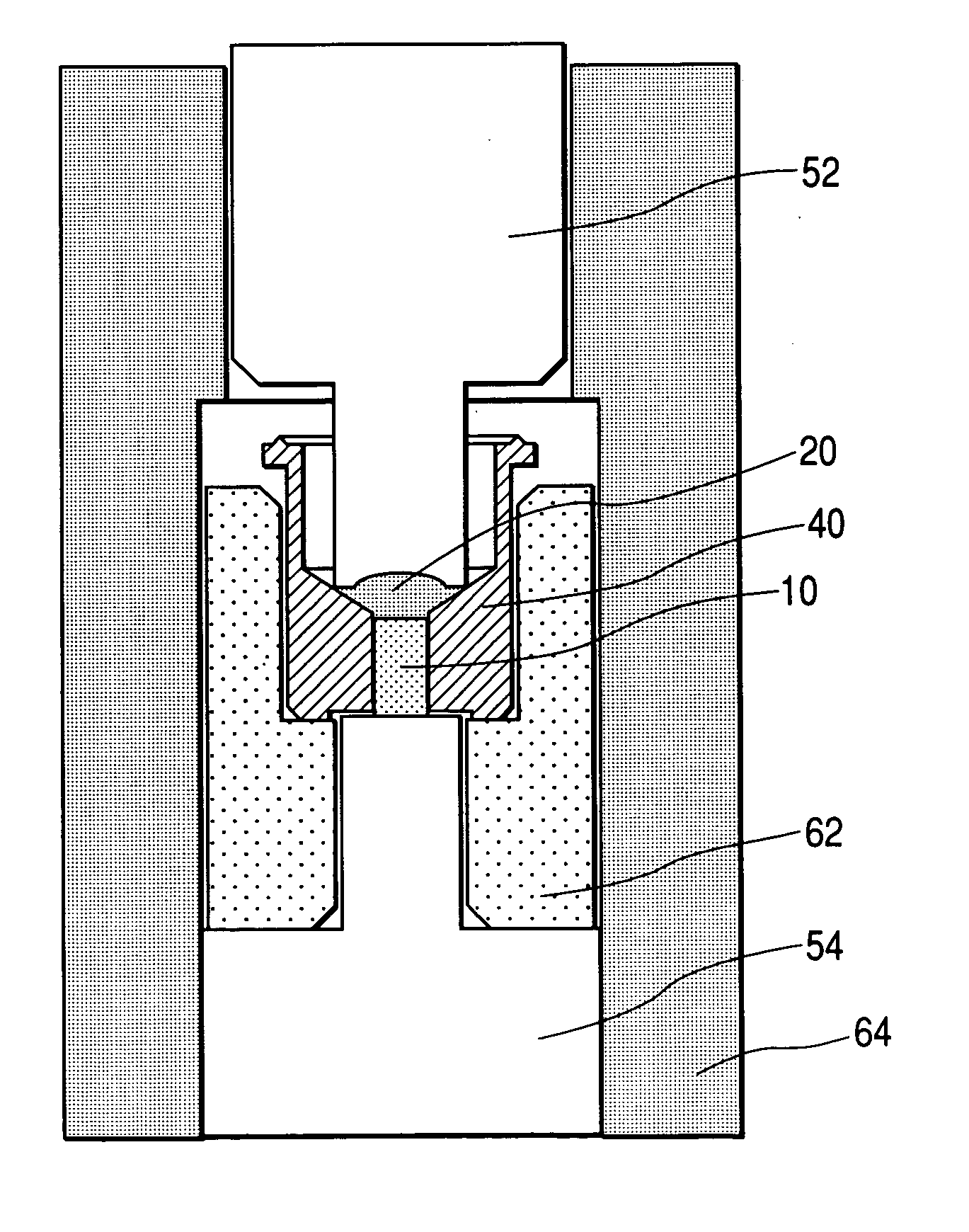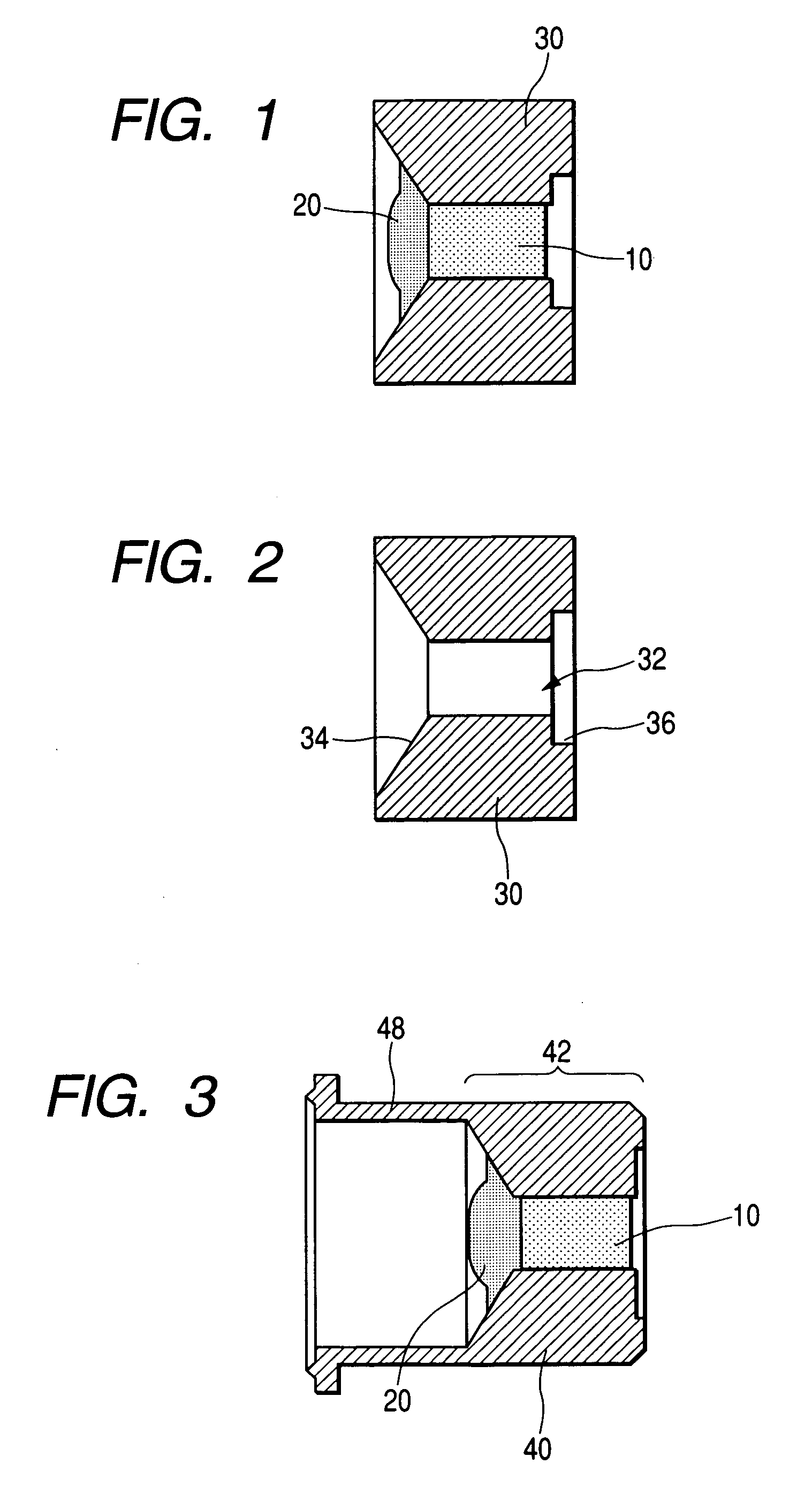Optical component and method of manufacturing the same
a technology of optical components and parts, applied in the field of optical components, can solve the problems of high processing cost, low productivity in the direction of instruments, semiconductor lasers, lenses, etc., and achieve the effects of easy mounting to the lens holder, high reliability, and easy maintenan
- Summary
- Abstract
- Description
- Claims
- Application Information
AI Technical Summary
Benefits of technology
Problems solved by technology
Method used
Image
Examples
Embodiment Construction
[0043] Preferred embodiments of the present invention are hereinafter described with reference to the drawings.
[0044]FIGS. 1 and 3 are cross sections through optical components according to embodiments of the present invention.
[0045] The optical component of the present invention which is shown in FIG. 1 is manufactured by inserting a graded-index rod lens 10 into a cylindrical through hole in a lens holder 30, holding the lens, and molding a lens 20 in tight fitting with one end face of the lens 10.
[0046] As shown in FIG. 2, the lens holder 30 is provided with the through hole having a central portion including a cylindrical portion 32 having a constant diameter substantially coincident with the diameter of the inserted rod lens. One side of the cylindrical portion is a tapering hole 34. The other side 36 of the cylindrical portion is greater in diameter than the body of the cylindrical portion.
[0047] Preferably, the lens holder 30 is so designed that the rod lens 10 passes int...
PUM
 Login to View More
Login to View More Abstract
Description
Claims
Application Information
 Login to View More
Login to View More - R&D
- Intellectual Property
- Life Sciences
- Materials
- Tech Scout
- Unparalleled Data Quality
- Higher Quality Content
- 60% Fewer Hallucinations
Browse by: Latest US Patents, China's latest patents, Technical Efficacy Thesaurus, Application Domain, Technology Topic, Popular Technical Reports.
© 2025 PatSnap. All rights reserved.Legal|Privacy policy|Modern Slavery Act Transparency Statement|Sitemap|About US| Contact US: help@patsnap.com



